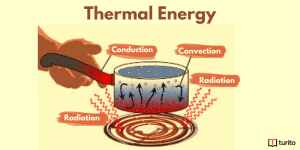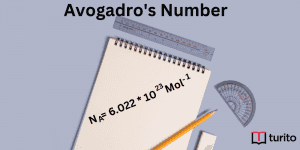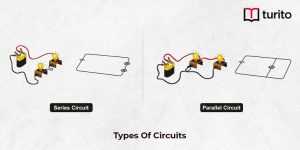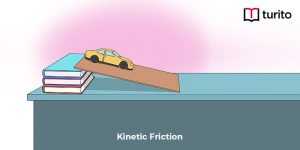What is a Quark?
Everything in the universe has twelve fundamental particles as their fundamental building blocks-six quarks and lepton. Quark and lepton are classified according to their flavours.
Quark meaning in physics is a basic component of matter which is described as an elementary particle. They combine with each other to form composite particles known as hadrons. Protons and neutrons are the most stable hadrons. A quark can be defined as a form of elementary particle and a basic component of all matter.
There are two types of stable particles present inside the nucleus of an atom. Those are neutrons and protons. The fundamental particles that protons comprise are quarks, which are elementary particles that are unstable in independent states. Therefore, quarks are never found in an isolated form. Several quark types combine to form stable hadrons. Other elementary particles like mesons and baryons are found inside the nucleus in the quark-gluon plasma.
We can always find quarks in pairs with their antiparticles called antiquarks. Their combination is called hardons, which combine to give other types of subatomic particles such as baryons and mesons. As of now, quarks are considered to be elementary particles that can’t be further broken down into other smaller particles as they lack a structure. Quarks are the only fundamental elementary particles existing in nature in particle Physics.

Quarks Examples
Protons are made up of one down quark and two up quarks, while neutrons consist of one up quark and two down quarks.
There are different types of quarks, all of which have antiparticles corresponding to them. Antiquarks exhibit the same mean lifetime, mass, and spin as their corresponding quarks. However, some other properties, like electric charges, are opposite with respect to the sign.
History of Quarks
The model of the quark in physics came into existence in 1963 with the help of two physicists from the United States named George Zweig and Murray Gell-Mann. George Zweig named these particles “aces”. Gell-Mann’s model revealed that quarks and their corresponding antiquarks are the components of all mesons, while three quarks form a baryon. This model suggested that quarks are of six types, and they exist in three pairs. Flavour is another name given to the type of quarks.
Types of Quark
- Up
- Down
- Top
- Bottom
- Strange
- Charm
Up
These are the lightest of all quarks. Due to the lowest mass, they are the most stable quarks. They are denoted by the symbol u, and u represents their antiparticle. Up quarks have a mass ranging from 1.6 – 3 MeV/ c². The electric charge of up quarks is + ⅔ e.
Down
These come next to up quarks in terms of mass and have pretty high stability. The symbol d represents them, and their mass ranges from 4 – 5.6 MeV/ c². The electric charge of down quarks is equal to – ⅓ e.
Strange
These are the third lightest quarks after up quarks and down quarks. They are represented by the symbol s, while their antiquarks are represented by the symbol S. The electric charge of strange quarks is equal to – ⅓ e.
Charm
An example of this type of quark in physics is a meson called the J/Psi particle. The symbol representing the charm quark is c, while its antiparticle is represented by the symbol C. Their electric charge is equal to + ⅔ e.
Top
This quark is represented by the symbol t, while the symbol for its antiparticle is T. The mass of this type of quark ranges between 172.8 – 1.5 GeV/ c². The electric charge of the top quark is equal to + ⅔ e.
Bottom
The symbol representing the bottom quark is b, while its antiparticle is represented by the symbol B. Its mass is approximately equal to 4.1 GeV/ c². The electric charge of the bottom quark is – ⅓ e.
Properties of Quarks
Electric Charge:
It is strange to know that the electric charge of quarks is not an integer. The electric charge on the charm, up, and top quark equals + ⅔ e, while that on the strange, down, and bottom quark equals – ⅓ e. Therefore, the electric charge on the charm, up, and top quark is a positive fractional charge, while the charge on a strange, down, and bottom quark is a negative fractional charge.
Here, e denotes the amount of charge a single electron carries without the sign. As all types of quarks have antiquarks corresponding to them, their electrical charges are opposite in sign to that of their antiquarks. This indicates that up quark coexists with its up antiquark and carries an electric charge equal to – ⅔ e.
According to the quark definition, the protons and neutrons inside the nucleus of an atom are composed of quarks. While a proton comprises one down and two up quarks, a neutron comprises two down and one up quark. This way, a proton carries a charge of +1e, and a neutron carries a charge equal to 0 e.
Size:
Quarks have a negligible charge and can be seen or measured. These are considered point-like structures in quantum chromodynamics, varying in size from 10 to 19 meters. Their size was discovered at the Stanford Linear Accelerator Center (SLAC) in deep elastic scattering experiments in 1968.
Mass:
Quarks have varying mass that depends on the mass of the fluid surrounding them, consisting of gluons. A major portion of the hadron mass constituted by these quarks is derived from the gluons that keep them together rather than from their own mass.
The masses of different quarks are different, with the top quark having the highest mass while the up quark has the lowest mass. The weight of the up quark is about 2-8 MeV/ c², while that of the top quark is about 170-180 * 103 MeV/ c². The mass of a quark is expressed in the units of MeV/ c², where MeV stands for mega-electrons volts and represents the energy of the quarks and c represents the light’s velocity in a vacuum.
Color Charge:
There are three types of colors of quarks in quantum chromodynamics— blue, green, and red. This property of quarks is called color charge. Antiquarks have the same color as their quarks, but they are represented as anti-blue, anti-green, and anti-red. Gluons also have two color charges corresponding to blue, red, green and anti-blue, anti-red and anti-green. It is mandatory to show all three colors of quarks in a proton.
Spin:
Every particle in the world exhibits a certain property that can not be separated from it. These are called their intrinsic properties, such as charge, mass, or angular momentum. Angular momentum is an intrinsic property of an elementary particle called spin.
Weak Interaction:
As we have already discussed, only two types of quarks— down and up quarks are stable. The other four types of quarks are unstable: charm, top, strange, and a bottom quark. This is because the interactive forces in these four quarks are so weak that they do not stay strong for long enough to be converted to the stable forms of quarks— down quarks and up quarks. The process of conversion of the types of quarks from the unstable to stable form is called the particle decay process.
Conclusion
Everything about quarks and their flavours has been discussed in this article. We have also explained the characteristics of quarks in detail. These are the most fundamental constituents of matter in the universe that can’t be broken down further. Therefore, it is important to have a basic understanding of them.
Frequently Asked Questions
1. What is a hadron?
Hadron can be defined as a subatomic particle that is composed of gluons, quarks, and their corresponding antiquarks. In other words, hadrons are a combination of quarks that are bonded together by gluons and have their corresponding antiquarks.
2. Can quarks exist independently?
Quarks cannot exist in isolation but as a component of a certain matter. A conceptual framework forms the basis of its standard theoretical model. It defines all of the elementary particles known. It also defines unobserved particles.
3. What does the spin of a proton depend on?
Protons are composed of three quarks— one down and two up quarks. All of these are bonded together with the help of gluons. Gluons are colour-charged massless particles. Just like quarks, gluons also have the property of spin. The spin of the proton is a combination of the spin of the quarks and gluons inside it, but their contribution to the proton’s spin is only about 30%.

Relevant Articles
Understanding Thermal Energy: What It Is and How It Works
Thermal energy is essential to our daily lives, from warming …
Understanding Thermal Energy: What It Is and How It Works Read More »
Read More >>Avogadro’s Number: Meaning, Importance, and More
Introduction The concept of measuring the microscopic particles that make …
Avogadro’s Number: Meaning, Importance, and More Read More »
Read More >>Kinetic Friction – Definition, Laws, Types
Kinetic Friction Kinetic force is a force acting between two …
Kinetic Friction – Definition, Laws, Types Read More »
Read More >>




















Comments: